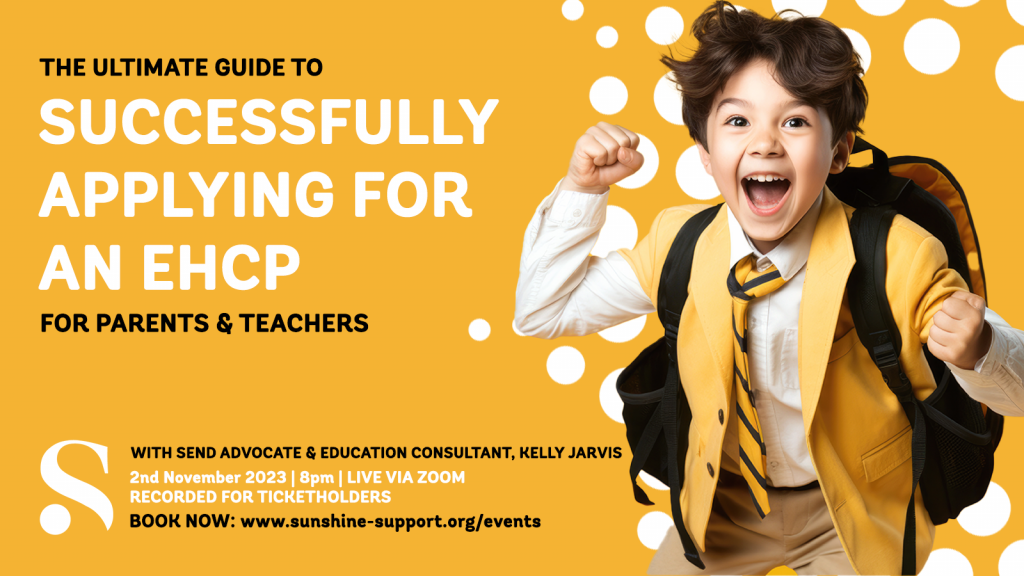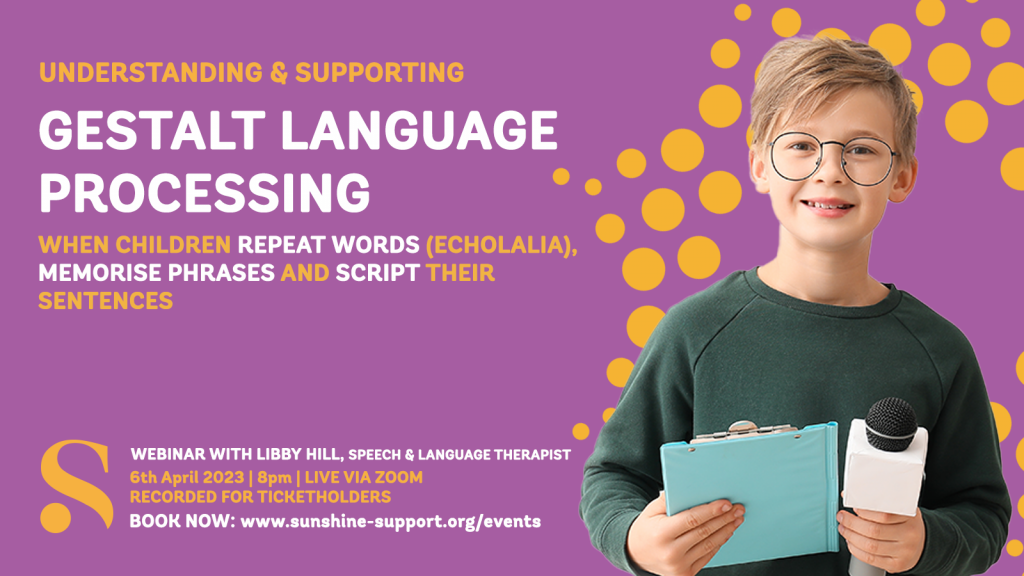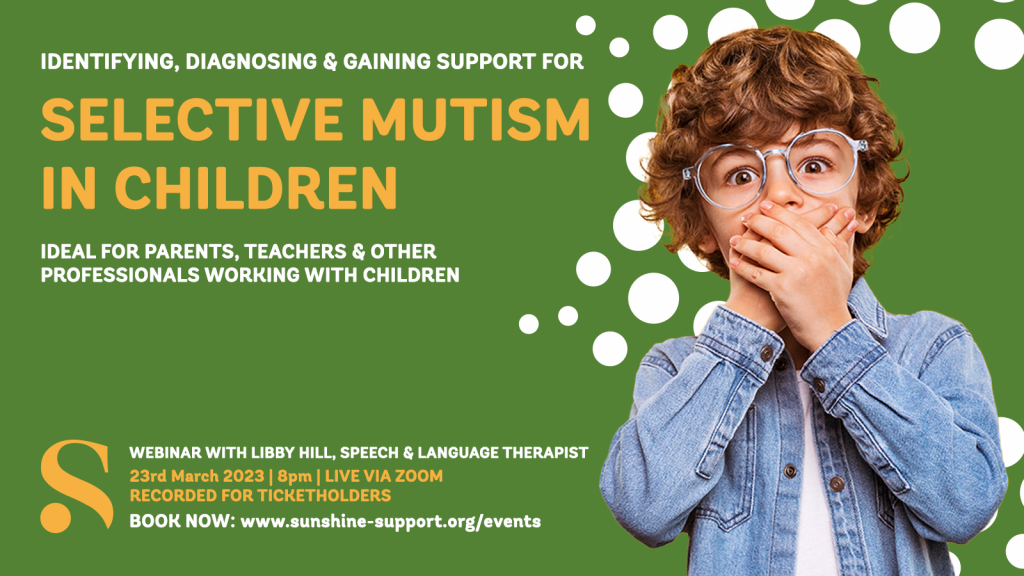The return to school often triggers big emotions… Not just in children but adults too; both caregivers and the teachers. How can we better prepare so it’s a more positive experience for our children?

Step one: UNDERSTAND YOURSELF
In order to help our children, we first need to look at ourselves; for an anxious adult cannot calm an anxious child.
What are our personal memories about school? Could they be impacting the way your children experience school? It’s always worthwhile considering how you view your own schooling and learning experience as it will help in giving an insight into your child’s views and experiences too.
Step two: SELF CARE
Your own self-care is very important in this process, we can only help regulate our children if we are regulated ourselves. Self care isn’t selfish, it’s essential in our role as caregiver.
Self care can be anything that helps you regulate your nervous system. It could be that early morning 10 minute coffee in peace where you can take a deep-belly breathe and get some all important oxygen into your system in a calm environment. It maybe a daily bath or shower where you can practice some deep breathing. It maybe your favourite programme being binge-watched for the 12th time! It could be more luxurious or as basic as stealing 5 mins on the loo where you can close your eyes and catch a breath.
Breathing is important. The best way to calm and tone your nervous system in preparation for having to calm others is ‘VOOing’ – something I’m always going on about in my Facebook live videos. Jane Evans explains it so well in this video.
Grab every opportunity you can to look after yourself.
Step three: UNDERSTANDING YOUR CHILD
Then we move on to understanding what is going on for our child in order to understand how to help them:
Identifying the cause of the anxiety – this is tricky. Sometimes our children can tell us, sometimes they can’t, sometimes they don’t even know. You know your child best, so explore some things with them.
The first stop is understanding the school climate and how that’s impacting your child. Here’s a great graphic that explains school climate.
You could have a chat, create visuals or play a game to gain your child’s views and feelings on the school climate.
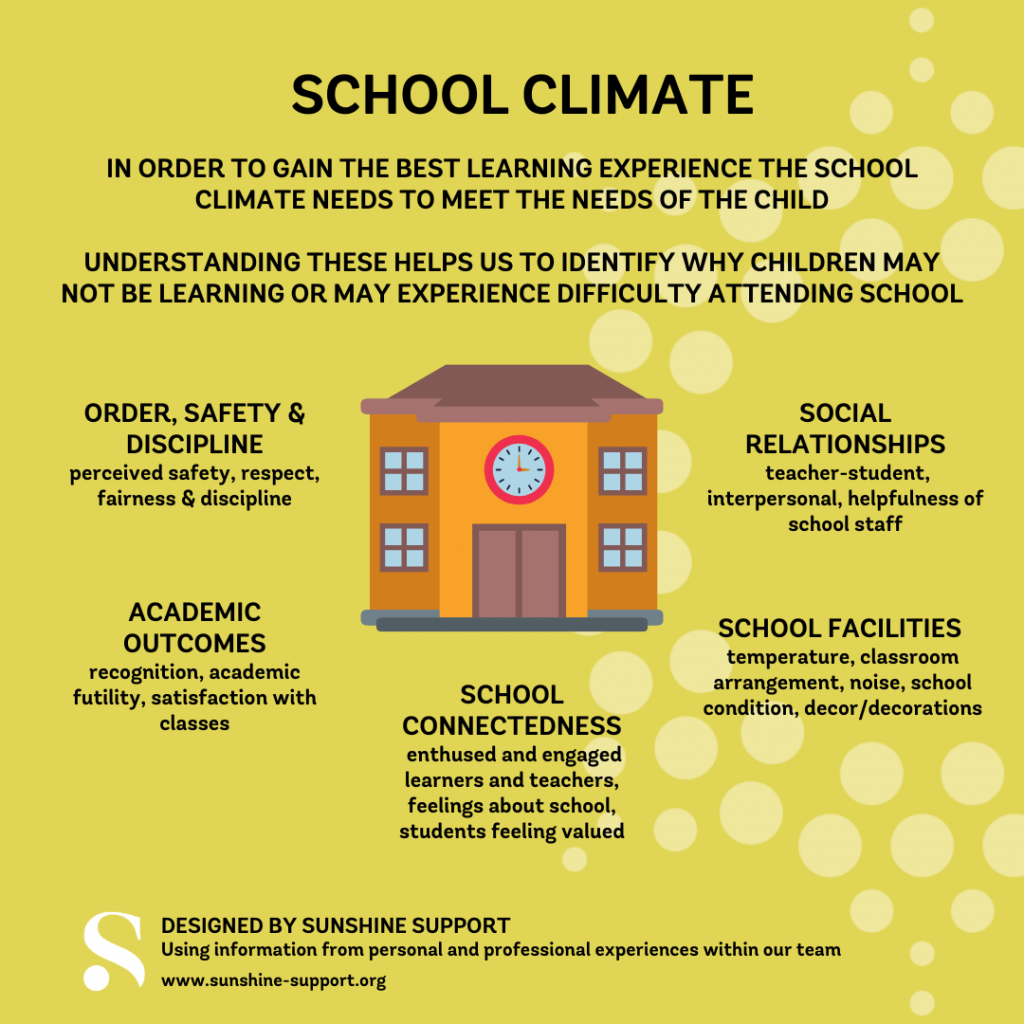
Step Four: SUPPORTING YOUR CHILD
Once you have a better idea of what is causing the worry/concern/anxiety you can start to support your child. Until that point it’s a guessing game that becomes frustrating for both you and your child.
- Validate your child’s concerns: “I can absolutely understand how that makes you feel that way…” resonate where possible “I used to feel like this too…”
- Let them sit with the emotion, don’t move them on too quickly: too often we tell our children when they fall “jump up, you’re ok!”. If we are to teach them that it truly is “Ok to not be OK” then we have to allow them to sit in that space of sadness to help them process it. Let them cry. Let them get frustrated. If frustration and anger is something you’re worried about then set boundaries for this before the discussion. If it’s right to do so ask them how they’re physically feeling in this moment of ‘being’, continue to validate and remind them they’re safe if/when appropriate. This is the work that can often only be done with the main caregiver and it’s the magical part of truly understanding what is going on.
- Document the concerns so you can work through them; maybe your child would like to write them down? Or draw them? It’s actually a great activity for working through stresses and also encourages connection between you both.
- Create an action plan; it’s essential you don’t fix the problems for your child, no matter how tempting, as this can be quite disabling and doesn’t encourage learning in this area. Create the plan together. How will you both work to overcome the worries that face your child?
- Be a Role Model: Talking about your self-care as a parent/carer and why it’s important is essential for your child’s wellbeing. We know our children will emulate what we do as they look up to us, we know that our own wellbeing impacts them and they learn through watching, not being told what to do. So how do we truly help them? By modelling good wellbeing and self-care. Talk to them about what you do to regulate yourself, what you do when you are faced with anxiety and worry… Share success stories, share the times when it didn’t go so well. Your child will be looking for these life experiences, they’ll find them reassuring and will bring them to feeling safe and understood. Which is just another way of validating them – and validation is so very important!
- Know what is within your control and not within your control. Being able to prioritise worries is essential.
- Who can help? What information should be shared? Agree what will be shared in order to get extra help. Let your child guide you in who to ask for help on their behalf (maybe their new class teacher, for instance), But also, it’s important that within the plan of action (Point 4) you encourage your child to seek out the people who can help them in school, and create that safe link for them before they return to school.
In some situations, ‘return to school anxiety’ is much bigger and much more difficult to understand. It can be linked to school based trauma and lead to school ‘refusal’, too. Click here to read more on this.
Parents and teachers working together is absolutely paramount at all stages of the process of reducing a child’s anxiety and supporting their learning.
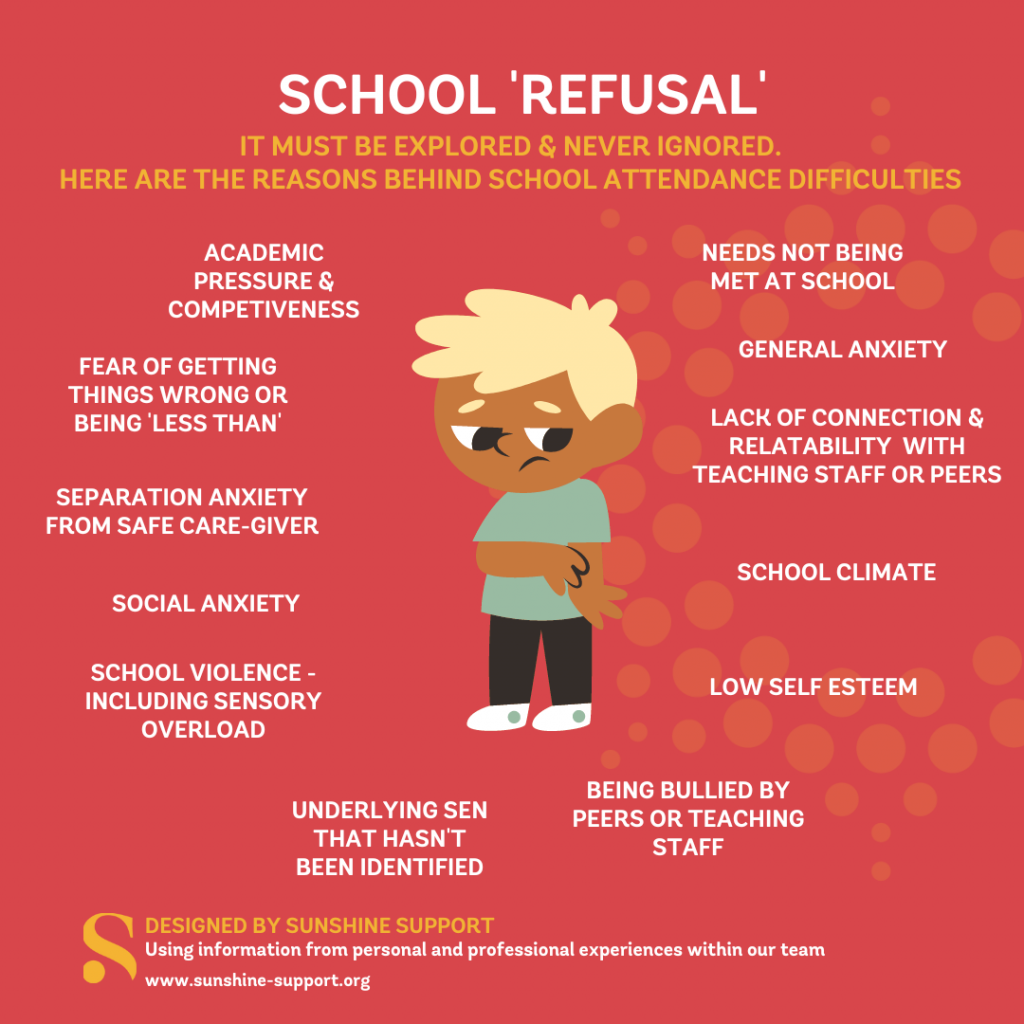

The Author – Rachel Tenacious
A little bit about me, I am a late diagnosed autistic parent with three children aged between 30 and 16. H is my youngest child she was diagnosed with autism at age 9 and selective mutism at 15.
We removed H from the education system in 2015 after she had what we now know as an autistic burn-out.
The school system didn’t suit H at all but home ed has been amazing.
Since my diagnosis I have begun to share some of our experiences at support groups and am hoping to expand this out to schools, colleges and anywhere people want to hear me really.



